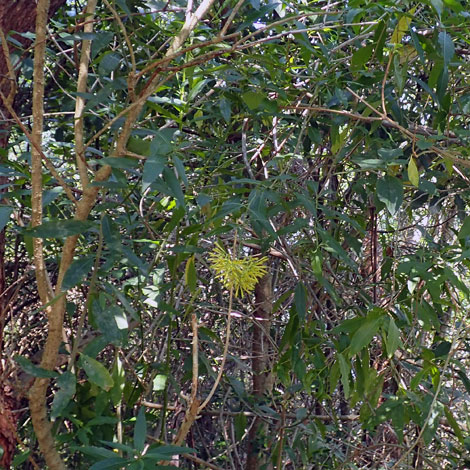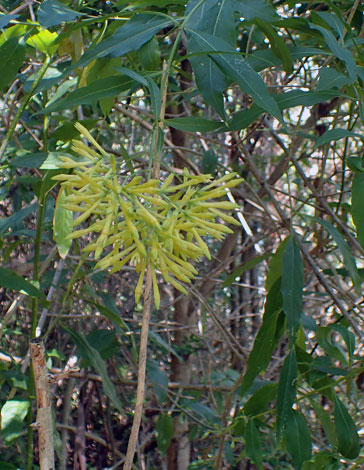Cestrum parqui Green Cestrum


Perhaps we were lucky to see even one of this species as it is an alien named in the New South Wales Noxious Weeds Act 1933 and is supposed to be destroyed when found (Sorry about that oz people - I've only just identified it and I'm not going back to Sydney to dig it out). The problem is that it easily propagates, has a long tap root making it difficult to dig out and all parts, sometimes even when partly burnt, are poisonous to cattle and to humans. Death from eating this is said to be both rapid and painful but animals won't usually eat it unless they are short of food. (c.f. Senecio jacobaea, Common Ragwort in the UK which has a dreadful reputation amongst the horse owning community but which is ignored by farm animals the field when there is plentiful supply of grass. Moral: provide appropriate grazing for your livestock and you almost definitely won't get such problems.)
Cestrum parqui is a member of the Solanaceae family which is famous for poisonous species like Atropa belladonna (Deadly Nightshade) and Solanum dulcamara (Bitterwseet) in the UK.
Known also as Green Poison Berry, Chilean cestrum or Willow-leaved Jessamine, it is a native of South America (Brazil, Bolivia, northern and central Chile, Peru, Paraguay, Uruguay and northern and central Argentina) but like many foreign plants, it finds the Australian climate just right. Unfortunately for those who would like to get rid of it, the flowers are said to be fragrant in the evening (are they confusing it with Cestrum nocturnum??) and it is a popular plant so is sold in nurseries and garden centres in other parts of the world. It has even been used as a substitute for Marijuana so getting rid of it from Australia is going to be very difficult.
Bradley's Head bush near Sydney, Eastern Australia 18th October 2015
Added on 3rd November 2015




